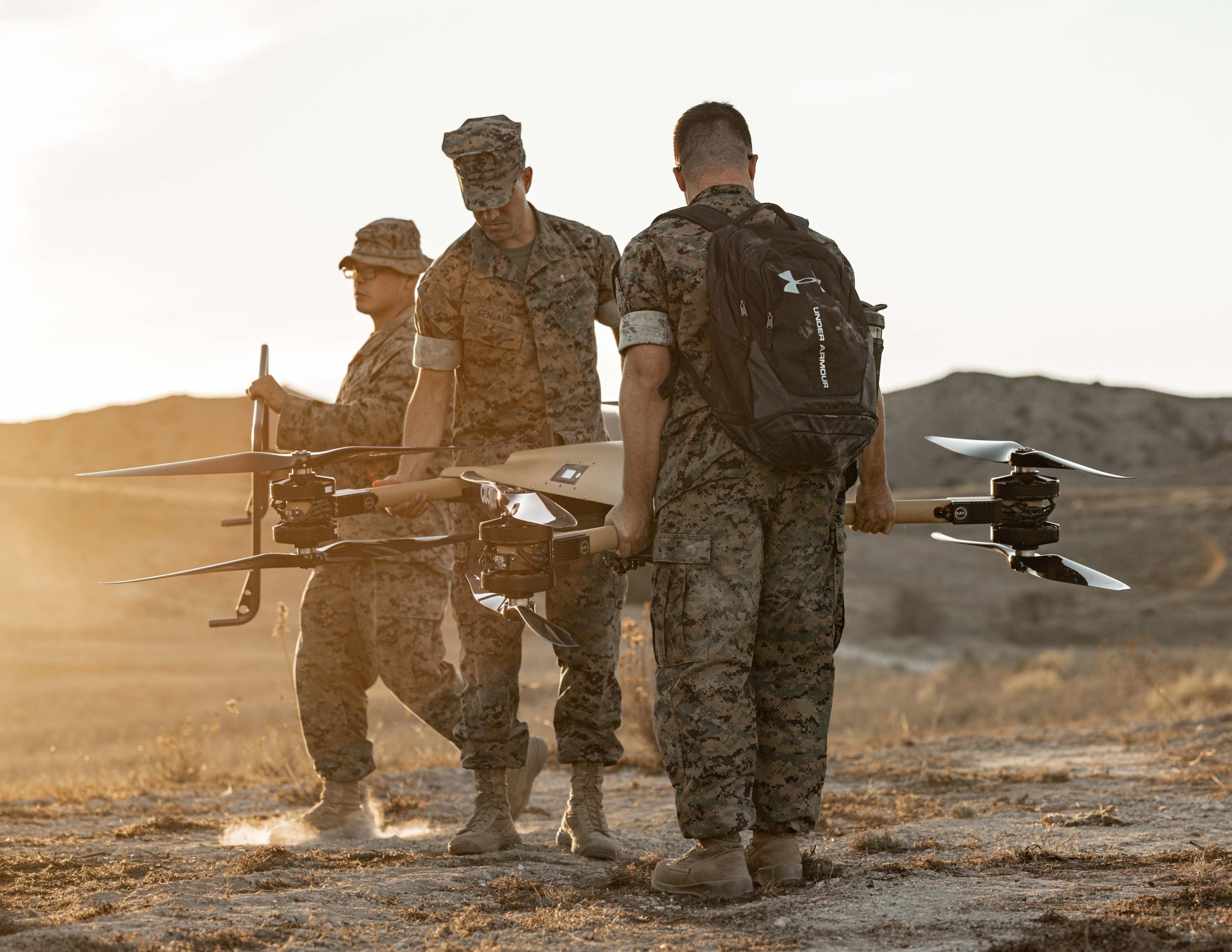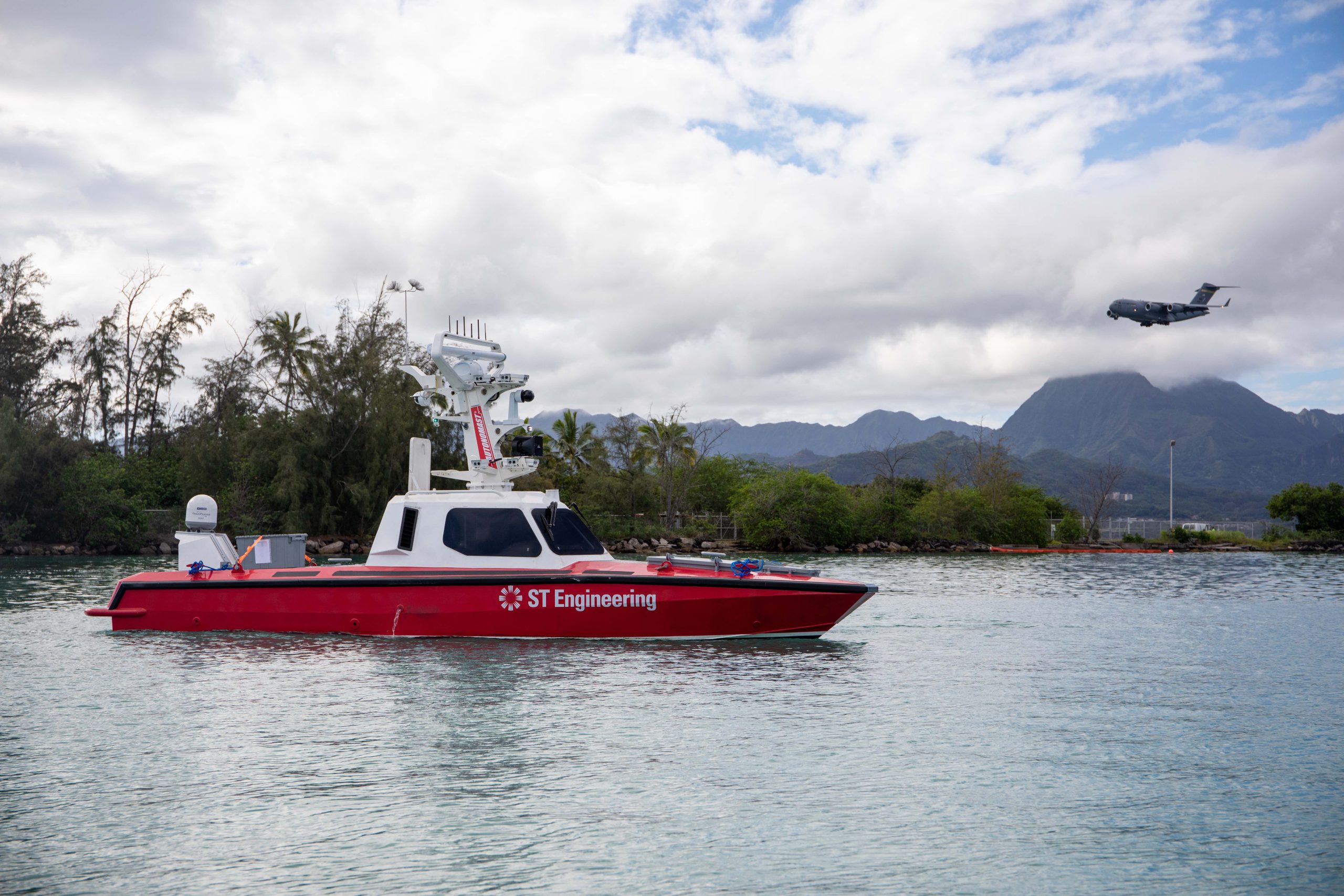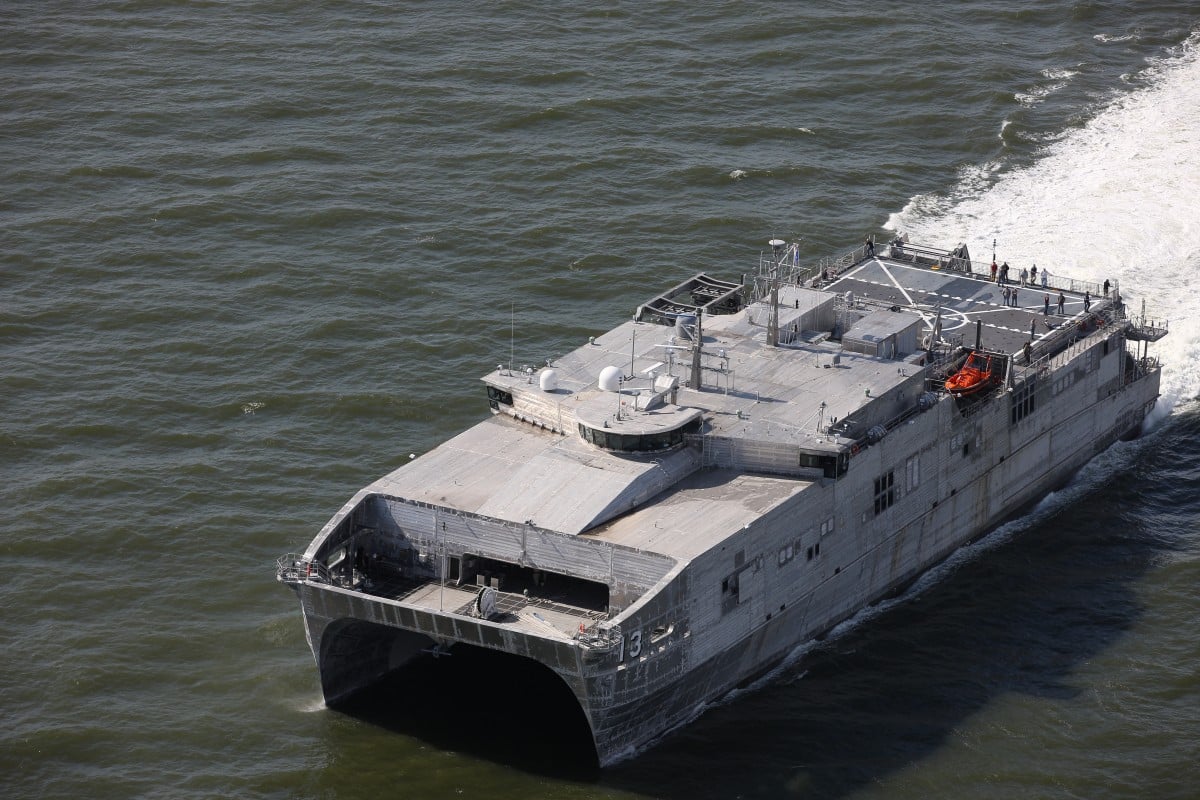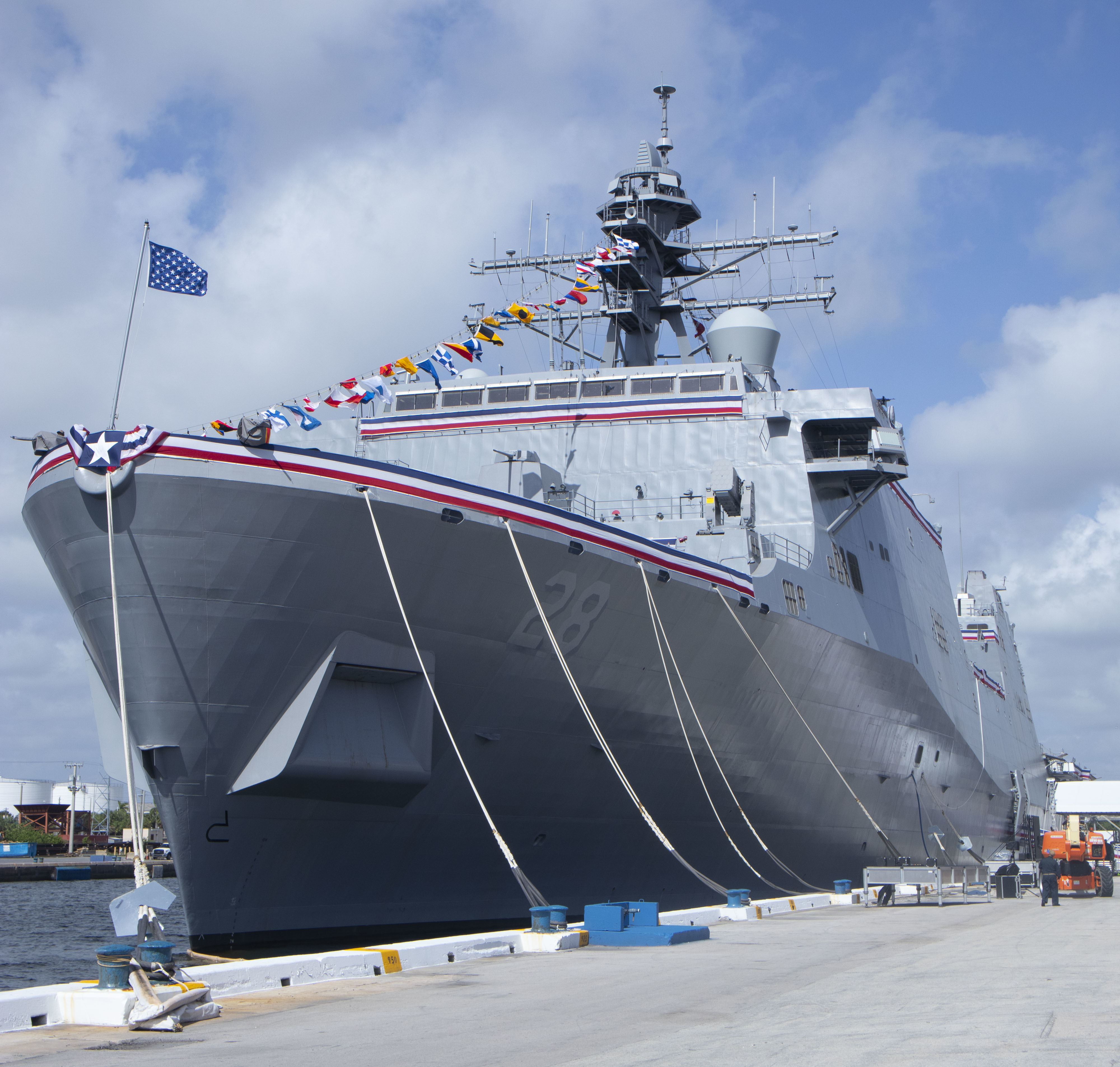
Marines are looking to push as many tasks as possible to autonomous systems as the service aims to operate across wide swaths of the Pacific.
The Marines are working on several avenues to add autonomy to the service, Lt. Gen. Karsten Heckl, Marine Corps deputy commandant for combat development and integration, told the audience at the Defense News conference Wednesday.
“If you take the [person] out of it, things get simpler and they typically get more efficient, and they get less expensive,” he said.
“You should try to go after everything.”
An example is the under-development low-profile autonomous ships the Marines are considering for contested resupply. The idea came from America’s ongoing counter-narcotics operations in the Caribbean and the Eastern Pacific, Heckl said.
“We just copied the drug lords out of South America,” he said.
Heckl singled out the recent test transit of the autonomous Spearhead-class highspeed transport USNS Apalachicola (T-EPF-13) that was fitted with a $44 million Congressionally mandated autonomy package.
“It went out and did like 1500 nautical miles, completely autonomously. …They had human beings on board as backups to watch, but what an amazing capability,” Heckl said.
“So, I think autonomous from a logistics perspective? Absolutely.”
In terms of aviation, existing fly by wire systems on modern aircraft make it much easier to make aircraft optionally manned.
“All platforms in my opinion, aviation and otherwise should be optionally unmanned… particularly from an aviation perspective. No longer you need oxygen. This doesn’t make sense. You don’t have to worry about bathroom breaks,” he said.

Heckl touched on the question of autonomous systems using lethal force.
“We’re going to have to have that discussion of man-in-the-loop and man-on-the-loop” in deciding on using autonomous weapons systems, Heckl said. He cited ethical questions of employing loitering munitions fired from unmanned surface or subsurface vessels as examples to consider.
On Force Design 2030, Heckl said, “priority one is lethality.” At the same time, he added the U.S. military needs to figure out how to bring allies and partners closer into how these advanced systems and new concepts like dispersed operations will be integrated in combat.
Among lessons learned since Force Design 2030 was introduced four years ago was “the importance of reconnaissance and counter-reconnaissance” in dispersed operations in the first island chain” from China’s mainland, Heckl said.
The idea is “shutting down sea lanes of communications” with longer-range precision fires and being able to operate “from seabed to space,” he said.
In a separate discussion Wednesday, acting Commandant Gen. Eric Smith said, “we’ve done some pretty Herculean work” in a short time in putting Force Design 2030 into the field. He cited test-firing Navy Standard Missiles and Tomahawk Land Attack Missiles off the back of a Joint Light Tactical Vehicle as examples. Force Design 2030 is moving along “faster than we anticipated.”
Smith and Heckl acknowledged there is a matter of capacity of the industrial base to deliver.
In the discussion, Smith said several times, in budgeting, there’s always “the constant tension between modernization and readiness” in where money goes.
When asked about the latest Pentagon study on amphibious warships Smith said, “Congress was pretty clear that 31” was the number, 10 being large-deck, Smith said.
“That’s the minimum number,” he said.
The Navy put a hold in this year’s budget request on amphibious shipbuilding pending the completion of the most recent study, USNI News previously reported.

Smith called the San Antonio-class (LPD-17), “the Ford F-150 pick-up truck” of the fleet. “[It’s] a floating airfield, floating hospital” and more. He added regional combatant commanders value them for “their low signature and capability to move.
“The important thing to focus on is capability. That’s just sovereign U.S. territory,” Heckl added. “It gives a lot of options.”
The biggest concern about the LPD class is cost of $1.72 billion per ship. Smith said that cost needed to be examined in terms of the 40-year life expectancy of the vessel. Looking at it that way, the LPD is “the cheapest life insurance policy you’ll have.”
On the new shore-to-shore connector, Landing Ship Medium, Heckl said, “we’re just trying to get the requirements right.” Requirements include the vessel, formerly called the Landing Amphibious Warship capable of landing troops, vehicles and material on differentt shore gradients in the Indo-Pacific. A final design decision is expected in 2025.
Smith said he regards acting Chief of Naval Operations Adm. Lisa Franchetti as “a warfighter” and “personal friend.” But “we don’t agree on everything,” reflecting the split between the Navy and the Marine Corps over future amphibious ship requirements. He added that relationship and the one he has Vice Adm. James Kilby, nominated to be the vice chief of naval operations, “is one built on trust.”
“People are still the absolute bedrock [of the Marine Corps], and they’re becoming more expensive” in terms of pay and benefits, Smith said Wednesday.
But he added that is needed to recruit and retain an all-volunteer force. Earlier in discussing budget thinking for Fiscal Year 2025, he said his priority remains Marines’ quality-of-life from barracks to child-care facilities.
“We have to fund that for the individual Marine and their living conditions,” he said.
He added in drawing up plans for future spending it was prudent to prepare for a flat or declining budget.
Smith said the continuing hold on promotions “is not sustainable.” As acting commandant, he added he is really holding down three jobs; the other two are as a member of the joint chiefs of staff and continuing in his confirmed position as assistant commandant.

“What doesn’t stop is the clock” in having to make critical decisions from budget to staffing regardless of confirmation status. “You send who you can” to different meetings that would have been attended by either the commandant or acting commandant. That then means he often has to go back to other meeting participants to clarify points of discussion.
On the operational level, he added, “I will continue to appoint two stars” to fill three-star billets that are coming open.
Since February, Sen. Tommy Tuberville (R-Ala.) has placed a hold on unanimous Senate confirmations for military nominations over objections to a Pentagon policy that reimburses service members for travel out-of-state for abortions. The Defense Department policy also includes other non-covered procedures like in vitro fertilization. Tuberville says the policy is a violation of the Hyde Amendment that bans federal funds to be used for abortions – a charge the Pentagon denies. So far more than 300 flag and general officer nominations are on hold across the DoD.
The Senate can still approve nominations on individuals, but each of those votes could be subject to hours of debates.





